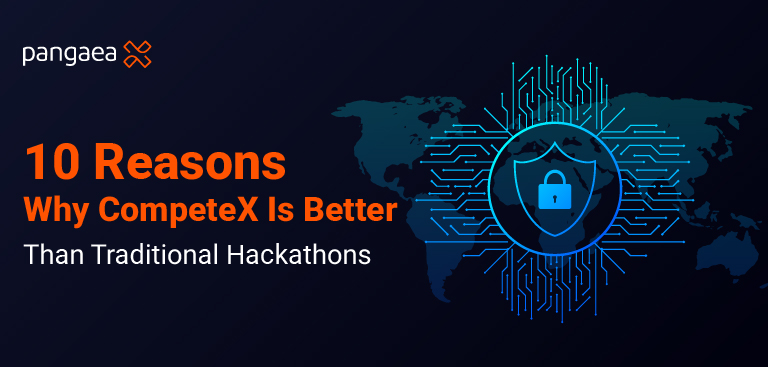Feature Engineering Strategies That Drive Success in Data Analytics Competitions

Data analytics competitions have emerged as powerful platforms for testing and showcasing real-world machine learning skills. They challenge participants to transform raw data into predictive insights through creative problem-solving and data manipulation. The deciding factor that often separates top performers from the rest is not the algorithm, but the features used to train it.
Feature engineering – the transformation of raw data into informative variables has long been recognized as the foundation of any high-performing model. It enhances predictive accuracy, improves interpretability, and reduces overfitting. In competitive environments where models compete for fractional gains, mastering feature engineering becomes the key to leaderboard success.
Why Feature Engineering Decides Competition Outcomes
Machine learning models can only learn from the data they receive. In most tabular competitions, algorithms like LightGBM, XGBoost, or CatBoost depend heavily on the structure and representation of input features. Well-crafted variables expose hidden relationships, enabling models to capture complex patterns more effectively.
Seasoned data scientists and competition winners consistently emphasize that understanding and transforming data matter more than model selection. Many winning teams spend the majority of their time cleaning, encoding, and enriching datasets instead of experimenting endlessly with algorithms. In fact, even relatively simple models, when trained on well-engineered features, can outperform deep and complex ensembles. The core principle remains better data representation leads to better learning.
How Good Features Outperform Complex Models
Feature engineering is about representation, encoding the real-world problem in a way that the model can learn from effectively. By designing variables that capture statistical patterns, ratios, or domain-specific relationships, data scientists give models the context they need to perform accurately.
Case studies show that superior features often make complex architecture unnecessary. With thoughtfully engineered inputs, simpler models become faster, more interpretable, and easier to maintain. In one notable competition, a top-ranking participant generated more than 10,000 potential features using GPU acceleration, then carefully selected only those that improved validation performance. The achievement came not from a new algorithm, but from mastering data representation.
Top Feature Engineering Strategies for Competitions
1. Scaling and Normalization
Non-tree-based models, such as neural networks and support vector machines, are sensitive to variations in scale. Techniques like Min–Max scaling or Z-score normalization ensure that all features contribute proportionally. Logarithmic or power transformations help correct skewed distributions, improving stability, and convergence.
2. Encoding Categorical Variables
Machine learning models cannot process raw text categories directly. Encoding techniques such as one-hot, label, and binary encoding convert them into numerical representations. For datasets with high cardinality, frequency encoding or target encoding can be more efficient. Testing multiple encoders and evaluating their effect on validation scores is often essential to finding the best fit.
3. Aggregated Statistics and Group-By Features
Aggregating data using group-by operations reveals hidden relationships between variables. Computing means standard deviations, quantiles, or counts for grouped categories can uncover structural patterns that plain features lack. Target encoding—replacing a categorical value with the mean of its target variable—is another powerful method when applied with proper cross-validation to prevent leakage.
4. Handling Missing Values and NaNs
Missing data should be treated thoughtfully rather than discarded. Techniques such as mean or median imputation, adding missingness indicators, or even encoding missing patterns as new features can preserve valuable information. Sometimes, the absence of a value itself carries predictive meaning, making careful testing of imputation methods essential.
5. Feature Binning and Digit Extraction
Binning continuous variables into discrete intervals (equal-width or quantile-based) can reduce noise and capture nonlinear effects. Similarly, digit extraction from identifiers or numeric codes can expose meaningful patterns embedded within structured data. Both techniques are particularly effective when variables have implicit thresholds or ordered relationships.
6. Domain-Specific and Interaction Features
Features inspired by domain knowledge frequently provide the biggest performance boosts. For example, differences between timestamps, ratios of related variables, or frequency counts of recurring categories often capture underlying behaviors that generic features overlook. Creating interaction features, such as multiplying or dividing existing variables, helps reveal relationships hidden in raw data.
7. Clustering and Dimensionality Reduction
Unsupervised techniques such as k-means clustering, Principal Component Analysis (PCA), and Singular Value Decomposition (SVD) can generate compact meta-features summarizing data structure. These derived variables highlight latent patterns and reduce redundancy, often improving model performance on large, correlated datasets.
Case Snapshot: Feature Engineering in Action
To illustrate how these strategies work in practice, consider two recent competitions:
Backpack Price Prediction (Kaggle Playground, 2025)
A competition winner generated more than 10,000 potential features using GPU-accelerated processing and retained only those that improved validation scores. Aggregations, histogram-based transformations, and NaN pattern encoding proved crucial, achieving a top position without complex neural models.
Real Estate Price Forecast (DataSource.ai)
Top competitors relied heavily on logarithmic transformations, target encoding, and domain-specific features such as city frequency counts and time differences. Their emphasis on distribution correction and clustering-based features demonstrates how data understanding drives superior outcomes.
Common Mistakes and Pitfalls
Despite its importance, feature engineering can easily go wrong. Watch for these common errors:
- Data leakage. Creating features that use information from the test set or future observations can inflate scores. For example, computing target means without proper cross‑validation leads to leakage; always use out‑of‑fold estimates for target encoding. Using time‑based features on data that are split by time can also leak future information; competition winners recommend building validation schemes that respect temporal separation.
- Ignoring distribution differences. Failing to account for shifts between training and test distributions can degrade performance. In the Knocktober competition, participants discovered that some variables had different distributions in the test set and eliminated those “noise variables,” leading to better scores. Always compare train/test distributions and adjust or remove variables accordingly.
- Over‑engineering features. Adding too many features can cause overfitting or degrade performance. The Real Estate winners emphasized focusing on a few meaningful features and discarding those with low importance. Evaluate feature importance and remove redundant or unhelpful variables.
- Neglecting missing values. Simply dropping rows with missing data can lead to bias, while improper imputation can distort relationships. Use indicators for missingness and test different imputation methods.
- Ignoring domain knowledge. Generic transformations are useful, but competition winners stress the value of domain‑specific features such as counts, ratios and time differences. Collaborate with subject‑matter experts or spend time understanding the problem context.
The CompeteX Advantage: A Fair, Feature-Driven Arena
CompeteX by PangaeaX, redefines data analytics competitions through a feature-first approach. It promotes transparent evaluation of pipelines, curated datasets, and baseline notebooks that emphasize feature engineering over model complexity.
The platform encourages experimentation with encoding, aggregation, and domain-specific transformations while ensuring fair validation and data integrity. Its growing community allows participants to exchange ideas, analyze feature shifts, and refine modeling techniques collaboratively. As CompeteX expands across industries, it offers a professional environment for data scientists to enhance their skills through real-world challenges.
Conclusion
Feature engineering is the foundation of competitive machine learning. By focusing on scaling, encoding, aggregation, missing-value handling, domain-specific variables, and dimensionality reduction, participants can unlock the full potential of their datasets.
Competitors who master data understanding consistently outperform those who rely solely on algorithmic complexity. As you prepare for your next data challenge, make feature engineering your priority—transform your raw data into structured insights that truly drive performance. To apply these strategies in a practical setting, explore the fair, feature-focused challenges available on CompeteX by PangaeaX.
Get your data results fast and accelerate your business performance with the insights you need today.



